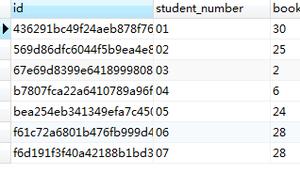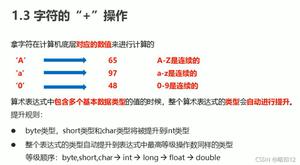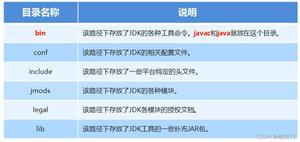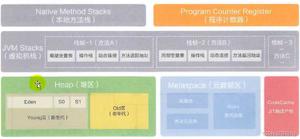JAVA UUID 生成

UUID是1.5中新增的一个类,在java.util下,用它可以产生一个号称全球唯一的ID
package com.mytest;
import java.util.UUID;
public class UTest {
public static void main(String[] args) {
UUID uuid = UUID.randomUUID();
System.out.println(uuid);
}
}
UUID(Universally Unique Identifier)全局唯一标识符,是指在一台机器上生成的数字,它保证对在同一时空中的所有机器都是唯一的。按照开放软件基金会(OSF)制定的标准计算,用到了以太网卡地址、纳秒级时间、芯片ID码和许多可能的数字。由以下几部分的组合:当前日期和时间(UUID的第一个部分与时间有关,如果你在生成一个UUID之后,过几秒又生成一个UUID,则第一个部分不同,其余相同),时钟序列,全局唯一的IEEE机器识别号(如果有网卡,从网卡获得,没有网卡以其他方式获得),UUID的唯一缺陷在于生成的结果串会比较长。
在Java中生成UUID主要有以下几种方式:
JDK1.5
如果使用的JDK1.5的话,那么生成UUID变成了一件简单的事,以为JDK实现了UUID:
java.util.UUID,直接调用即可.
UUID uuid = UUID.randomUUID();
String s = UUID.randomUUID().toString();//用来生成数据库的主键id非常不错。。
UUID是由一个十六位的数字组成,表现出来的形式例如
550E8400-E29B-11D4-A716-446655440000
//下面就是实现为数据库获取一个唯一的主键id的代码
public class UUIDGenerator {
public UUIDGenerator() {
}
/**
* 获得一个UUID
* @return String UUID
*/
public static String getUUID(){
String s = UUID.randomUUID().toString();
//去掉“-”符号
return s.substring(0,8)+s.substring(9,13)+s.substring(14,18)+s.substring(19,23)+s.substring(24);
}
/**
* 获得指定数目的UUID
* @param number int 需要获得的UUID数量
* @return String[] UUID数组
*/
public static String[] getUUID(int number){
if(number < 1){
return null;
}
String[] ss = new String[number];
for(int i=0;i<number;i++){
ss[i] = getUUID();
}
return ss;
}
public static void main(String[] args){
String[] ss = getUUID(10);
for(int i=0;i<ss.length;i++){
System.out.println(ss[i]);
}
}
}
两种方式生成guid 与uuid
需要comm log 库
/**
* @author Administrator
*
* TODO To change the template for this generated type comment go to
* Window - Preferences - Java - Code Style - Code Templates
*/
import java.net.InetAddress;
import java.net.UnknownHostException;
import java.security.MessageDigest;
import java.security.NoSuchAlgorithmException;
import java.security.SecureRandom;
import java.util.Random;
public class RandomGUID extends Object {
protected final org.apache.commons.logging.Log logger = org.apache.commons.logging.LogFactory
.getLog(getClass());
public String valueBeforeMD5 = "";
public String valueAfterMD5 = "";
private static Random myRand;
private static SecureRandom mySecureRand;
private static String s_id;
private static final int PAD_BELOW = 0x10;
private static final int TWO_BYTES = 0xFF;
/*
* Static block to take care of one time secureRandom seed.
* It takes a few seconds to initialize SecureRandom. You might
* want to consider removing this static block or replacing
* it with a "time since first loaded" seed to reduce this time.
* This block will run only once per JVM instance.
*/
static {
mySecureRand = new SecureRandom();
long secureInitializer = mySecureRand.nextLong();
myRand = new Random(secureInitializer);
try {
s_id = InetAddress.getLocalHost().toString();
} catch (UnknownHostException e) {
e.printStackTrace();
}
}
/*
* Default constructor. With no specification of security option,
* this constructor defaults to lower security, high performance.
*/
public RandomGUID() {
getRandomGUID(false);
}
/*
* Constructor with security option. Setting secure true
* enables each random number generated to be cryptographically
* span. Secure false defaults to the standard Random function seeded
* with a single cryptographically span random number.
*/
public RandomGUID(boolean secure) {
getRandomGUID(secure);
}
/*
* Method to generate the random GUID
*/
private void getRandomGUID(boolean secure) {
MessageDigest md5 = null;
StringBuffer sbValueBeforeMD5 = new StringBuffer(128);
try {
md5 = MessageDigest.getInstance("MD5");
} catch (NoSuchAlgorithmException e) {
logger.error("Error: " + e);
}
try {
long time = System.currentTimeMillis();
long rand = 0;
if (secure) {
rand = mySecureRand.nextLong();
} else {
rand = myRand.nextLong();
}
sbValueBeforeMD5.append(s_id);
sbValueBeforeMD5.append(":");
sbValueBeforeMD5.append(Long.toString(time));
sbValueBeforeMD5.append(":");
sbValueBeforeMD5.append(Long.toString(rand));
valueBeforeMD5 = sbValueBeforeMD5.toString();
md5.update(valueBeforeMD5.getBytes());
byte[] array = md5.digest();
StringBuffer sb = new StringBuffer(32);
for (int j = 0; j < array.length; ++j) {
int b = array[j] & TWO_BYTES;
if (b < PAD_BELOW)
sb.append('0');
sb.append(Integer.toHexString(b));
}
valueAfterMD5 = sb.toString();
} catch (Exception e) {
logger.error("Error:" + e);
}
}
/*
* Convert to the standard format for GUID
* (Useful for SQL Server UniqueIdentifiers, etc.)
* Example: C2FEEEAC-CFCD-11D1-8B05-00600806D9B6
*/
public String toString() {
String raw = valueAfterMD5.toUpperCase();
StringBuffer sb = new StringBuffer(64);
sb.append(raw.substring(0, 8));
sb.append("-");
sb.append(raw.substring(8, 12));
sb.append("-");
sb.append(raw.substring(12, 16));
sb.append("-");
sb.append(raw.substring(16, 20));
sb.append("-");
sb.append(raw.substring(20));
return sb.toString();
}
// Demonstraton and self test of class
public static void main(String args[]) {
for (int i=0; i< 100; i++) {
RandomGUID myGUID = new RandomGUID();
System.out.println("Seeding String=" + myGUID.valueBeforeMD5);
System.out.println("rawGUID=" + myGUID.valueAfterMD5);
System.out.println("RandomGUID=" + myGUID.toString());
}
}
}
同样
UUID uuid = UUID.randomUUID();
System.out.println("{"+uuid.toString()+"}");
UUID是指在一台机器上生成的数字,它保证对在同一时空中的所有机器都是唯一的。通常平台会提供生成UUID的API。UUID按照开放软件基金会(OSF)制定的标准计算,用到了以太网卡地址、纳秒级时间、芯片ID码和许多可能的数字。由以下几部分的组合:当前日期和时间(UUID的第一个部分与时间有关,如果你在生成一个UUID之后,过几秒又生成一个UUID,则第一个部分不同,其余相同),时钟序列,全局唯一的IEEE机器识别号(如果有网卡,从网卡获得,没有网卡以其他方式获得),UUID的唯一缺陷在于生成的结果串会比较长。关于UUID这个标准使用最普遍的是微软的GUID(Globals Unique Identifiers)。
本文来自CSDN博客,转载请标明出处:http://blog.csdn.net/xiajing12345/archive/2005/04/22/358976.aspx
UUID是1.5中新增的一个类,在java.util下,用它可以产生一个号称全球唯一的ID
package com.mytest;
import java.util.UUID;
public class UTest {
public static void main(String[] args) {
UUID uuid = UUID.randomUUID();
System.out.println(uuid);
}
}
UUID(Universally Unique Identifier)全局唯一标识符,是指在一台机器上生成的数字,它保证对在同一时空中的所有机器都是唯一的。按照开放软件基金会(OSF)制定的标准计算,用到了以太网卡地址、纳秒级时间、芯片ID码和许多可能的数字。由以下几部分的组合:当前日期和时间(UUID的第一个部分与时间有关,如果你在生成一个UUID之后,过几秒又生成一个UUID,则第一个部分不同,其余相同),时钟序列,全局唯一的IEEE机器识别号(如果有网卡,从网卡获得,没有网卡以其他方式获得),UUID的唯一缺陷在于生成的结果串会比较长。
在Java中生成UUID主要有以下几种方式:
JDK1.5
如果使用的JDK1.5的话,那么生成UUID变成了一件简单的事,以为JDK实现了UUID:
java.util.UUID,直接调用即可.
UUID uuid = UUID.randomUUID();
String s = UUID.randomUUID().toString();//用来生成数据库的主键id非常不错。。
UUID是由一个十六位的数字组成,表现出来的形式例如
550E8400-E29B-11D4-A716-446655440000
//下面就是实现为数据库获取一个唯一的主键id的代码
public class UUIDGenerator {
public UUIDGenerator() {
}
/**
* 获得一个UUID
* @return String UUID
*/
public static String getUUID(){
String s = UUID.randomUUID().toString();
//去掉“-”符号
return s.substring(0,8)+s.substring(9,13)+s.substring(14,18)+s.substring(19,23)+s.substring(24);
}
/**
* 获得指定数目的UUID
* @param number int 需要获得的UUID数量
* @return String[] UUID数组
*/
public static String[] getUUID(int number){
if(number < 1){
return null;
}
String[] ss = new String[number];
for(int i=0;i<number;i++){
ss[i] = getUUID();
}
return ss;
}
public static void main(String[] args){
String[] ss = getUUID(10);
for(int i=0;i<ss.length;i++){
System.out.println(ss[i]);
}
}
}
两种方式生成guid 与uuid
需要comm log 库
/**
* @author Administrator
*
* TODO To change the template for this generated type comment go to
* Window - Preferences - Java - Code Style - Code Templates
*/
import java.net.InetAddress;
import java.net.UnknownHostException;
import java.security.MessageDigest;
import java.security.NoSuchAlgorithmException;
import java.security.SecureRandom;
import java.util.Random;
public class RandomGUID extends Object {
protected final org.apache.commons.logging.Log logger = org.apache.commons.logging.LogFactory
.getLog(getClass());
public String valueBeforeMD5 = "";
public String valueAfterMD5 = "";
private static Random myRand;
private static SecureRandom mySecureRand;
private static String s_id;
private static final int PAD_BELOW = 0x10;
private static final int TWO_BYTES = 0xFF;
/*
* Static block to take care of one time secureRandom seed.
* It takes a few seconds to initialize SecureRandom. You might
* want to consider removing this static block or replacing
* it with a "time since first loaded" seed to reduce this time.
* This block will run only once per JVM instance.
*/
static {
mySecureRand = new SecureRandom();
long secureInitializer = mySecureRand.nextLong();
myRand = new Random(secureInitializer);
try {
s_id = InetAddress.getLocalHost().toString();
} catch (UnknownHostException e) {
e.printStackTrace();
}
}
/*
* Default constructor. With no specification of security option,
* this constructor defaults to lower security, high performance.
*/
public RandomGUID() {
getRandomGUID(false);
}
/*
* Constructor with security option. Setting secure true
* enables each random number generated to be cryptographically
* span. Secure false defaults to the standard Random function seeded
* with a single cryptographically span random number.
*/
public RandomGUID(boolean secure) {
getRandomGUID(secure);
}
/*
* Method to generate the random GUID
*/
private void getRandomGUID(boolean secure) {
MessageDigest md5 = null;
StringBuffer sbValueBeforeMD5 = new StringBuffer(128);
try {
md5 = MessageDigest.getInstance("MD5");
} catch (NoSuchAlgorithmException e) {
logger.error("Error: " + e);
}
try {
long time = System.currentTimeMillis();
long rand = 0;
if (secure) {
rand = mySecureRand.nextLong();
} else {
rand = myRand.nextLong();
}
sbValueBeforeMD5.append(s_id);
sbValueBeforeMD5.append(":");
sbValueBeforeMD5.append(Long.toString(time));
sbValueBeforeMD5.append(":");
sbValueBeforeMD5.append(Long.toString(rand));
valueBeforeMD5 = sbValueBeforeMD5.toString();
md5.update(valueBeforeMD5.getBytes());
byte[] array = md5.digest();
StringBuffer sb = new StringBuffer(32);
for (int j = 0; j < array.length; ++j) {
int b = array[j] & TWO_BYTES;
if (b < PAD_BELOW)
sb.append('0');
sb.append(Integer.toHexString(b));
}
valueAfterMD5 = sb.toString();
} catch (Exception e) {
logger.error("Error:" + e);
}
}
/*
* Convert to the standard format for GUID
* (Useful for SQL Server UniqueIdentifiers, etc.)
* Example: C2FEEEAC-CFCD-11D1-8B05-00600806D9B6
*/
public String toString() {
String raw = valueAfterMD5.toUpperCase();
StringBuffer sb = new StringBuffer(64);
sb.append(raw.substring(0, 8));
sb.append("-");
sb.append(raw.substring(8, 12));
sb.append("-");
sb.append(raw.substring(12, 16));
sb.append("-");
sb.append(raw.substring(16, 20));
sb.append("-");
sb.append(raw.substring(20));
return sb.toString();
}
// Demonstraton and self test of class
public static void main(String args[]) {
for (int i=0; i< 100; i++) {
RandomGUID myGUID = new RandomGUID();
System.out.println("Seeding String=" + myGUID.valueBeforeMD5);
System.out.println("rawGUID=" + myGUID.valueAfterMD5);
System.out.println("RandomGUID=" + myGUID.toString());
}
}
}
同样
UUID uuid = UUID.randomUUID();
System.out.println("{"+uuid.toString()+"}");
UUID是指在一台机器上生成的数字,它保证对在同一时空中的所有机器都是唯一的。通常平台会提供生成UUID的API。UUID按照开放软件基金会(OSF)制定的标准计算,用到了以太网卡地址、纳秒级时间、芯片ID码和许多可能的数字。由以下几部分的组合:当前日期和时间(UUID的第一个部分与时间有关,如果你在生成一个UUID之后,过几秒又生成一个UUID,则第一个部分不同,其余相同),时钟序列,全局唯一的IEEE机器识别号(如果有网卡,从网卡获得,没有网卡以其他方式获得),UUID的唯一缺陷在于生成的结果串会比较长。关于UUID这个标准使用最普遍的是微软的GUID(Globals Unique Identifiers)。
本文来自CSDN博客,转载请标明出处:http://blog.csdn.net/xiajing12345/archive/2005/04/22/358976.aspx
以上是 JAVA UUID 生成 的全部内容, 来源链接: utcz.com/z/392765.html






